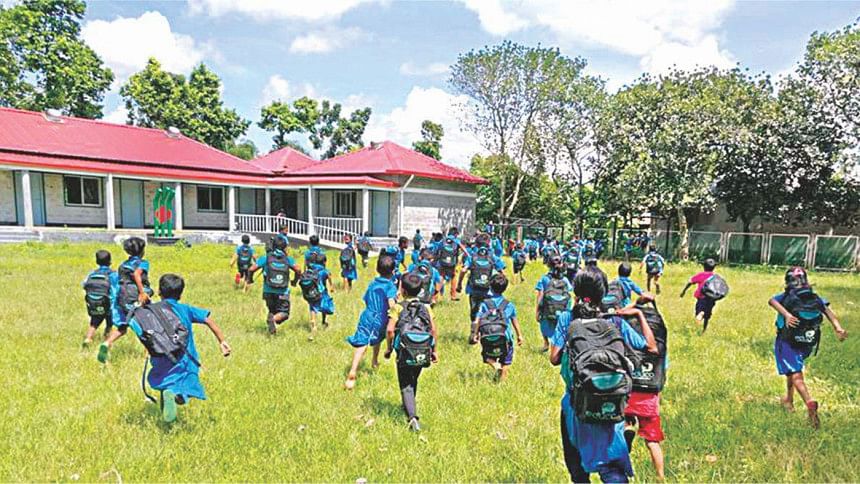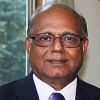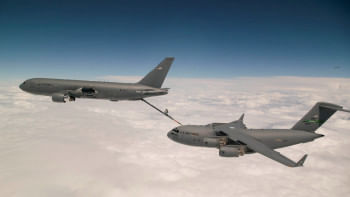When and how can schools reopen?

On June 14, the ministry of education extended school closure, imposed on March 18 due to the Covid-19 pandemic, to August 6. Earlier, the prime minister had said the closure may continue to September. Education authorities have to decide when and how schools can reopen safely and what the options are. A hasty move can push the situation beyond control.
A hot debate is raging in the USA this week after the authoritative Center for Disease Control (CDC) issued guidelines for safe school reopening which President Trump did not like. He considered it "too tough," and threatened cutting federal government funds for schools that do not reopen with regular classes in the new academic year beginning in August and September in different states.
The painful dilemma faced in balancing what is to be done to protect livelihood and economy and save the lives and health of people cannot be underestimated. Political and public policy choices have to be made based on scientific evidence, health protection imperatives, and minimising damage to people's livelihood. The wellbeing of children, including resumption of learning, has to be a key concern.
UNESCO, UNICEF, WFP and World Bank issued guidelines in mid-May on the safe reopening of schools amidst ongoing closures affecting nearly 1.3 billion students worldwide. The UN agencies' guidelines dealt with safe operations of schools, recouping learning loss, students' wellbeing and protection, and reaching the most marginalised. Attention is also needed to providing financial support to implement the policy, investing in recovery and resilience of the system.
The UN agencies provide useful guidelines about how schools may reopen, but a prior judgement has to be made about when it is safe to open the school. Health experts and epidemiologists across the globe, including in Bangladesh, are unanimous in supporting a cautious approach to reopening schools and most economic activities. They agree that any situation that brings people together is a risk now, even with social distancing and other precautions, and can reignite the spread.
Ashish Jha, director of Harvard Global Health Institute, says that school authorities have to seriously ask themselves if they are really ready to open and stay open. They have to ask if they are ready in respect of classroom space, hygiene, masks, temperature check, Covid-19 testing, tracing, isolation, health referral, and counselling, not just for the students, but also for the teachers and staff.
Alison Galvani, Yale University's director of Center for Infectious Disease Modeling and Analysis, reports that their study indicates that most transmission is caused by pre-symptomatic and asymptomatic carriers, a dangerous feature of Covid-19. Schools with students and teachers coming together can endanger not only these groups but also their families and all they come in contact with outside school.
But is there a benchmark for safe gathering, as in a regular classroom? The UN guideline did not indicate a benchmark and the CDC guideline also refrained from being specific, it appears, under Trump administration bullying.
Epidemiologists admit that it depends on the socioeconomic context, but the best judgement is a sustained period of infection around one to two cases for a population of 100,000. This suggests that an ideal safe level for reopening schools in Bangladesh would be when total current infection comes down to 2,000 to 3,000. The infection rate for the last month or so has been increasing daily by more than these numbers. It appears decisions have to be taken for partial reopening with necessary safety rules before the ideal infection level is reached.
A low national average in infection rate would be the aim, but it does vary greatly for different areas. The larger Dhaka Metropolis has about one-third of total infections in the country. An upazila (there are around 500 in the country) with an average population of 350,000 would be an appropriate unit to estimate infection rate and take necessary follow-up action.
The first step for a decision about school reopening would be to estimate as objectively as possible the upazila-wise infection rate. The testing done now is not done with any epidemiology-based sampling frame. A representative population sample from each upazila should be tested using the current RT-PCR testing procedure, which can be complemented by a larger sample with rapid testing, as one designed by Gonoshasthaya Kendra.
Once an estimate of the infected population is established by upazilas, the next steps for the school reopening decision can be taken. Benchmarks for three levels of infection spread—similar to the idea of red, yellow and green zones (but not implemented)—could be used to assess the status of upazilas or even parts of upazilas, where appropriate.
No area can claim to have reached a status of complete safety until zero infection is reported for several weeks or an effective vaccine is available. Schools can open in the green and yellow areas with some variation in school operation. Schools in red zones will have to remain closed until their status changes, as determined by testing and infection rates. One size cannot fit all.
An expert team including epidemiologists should establish benchmarks of rates of infection for the three levels and the different protocols that can be applied for school opening decisions and continuing school operations. Some suggestions are offered below.
Even in a green zone, a cautious approach has to be followed because the risk of a resurgence exists. Masks, sanitisers, washing with soap and water must be available for students and teachers. Distance should be maintained in classrooms keeping a student seat vacant between two students. Classes should be held in two shifts and for shorter hours (perhaps three hours for each shift), because of space limitations and also to limit contact time.
Recouping learning losses should be the main objective, focusing on key foundational skills (reading, writing, math and some play and games at primary level; these plus English and science at the secondary level). Time should be devoted to teaching-learning and not on testing or preparing for testing, either public or annual school test. Quizzes and exercises in class as part of teaching, known as formative evaluation, are useful.
Blended approach of mixing distance mode and face-to-face should be supported with teachers guiding and helping the students in this respect. Teachers will also need guidance and support for this purpose. A teacher should be assigned to a group of students, say 20, as their counsellor and mentor to advise them and give them mental support and encouragement, keeping in touch with them and their parents by phone.
Financial support should be available for schools for maintaining hygiene and washing facilities. Teacher should receive guidelines for their role and work during the pandemic and recovery phase, and should receive an allowance as an incentive. Support for them and their families' health and safety should be available.
For a yellow zone, all these measures would apply, plus some extra measures regarding distancing in classroom, attendance in shifts, and extra sanitation and disinfection measures.
Distance between students in classroom in the yellow zone should be preferably two empty seats between students. This means only one-third of the normal students can attend at a time. More shifts and shorter hours would be necessary to accommodate all. Students may have to attend school on alternate days—three days a week.
The additional sanitation measures in the yellow zone would be to disinfect and wipe all surfaces and floors every day before classes meet.
It appears Eid-ul-Azha ceremonies with animal markets and slaughtering will go on perhaps with some restrictions. There will also be travel to distant villages and homes. There is bound to be a spike in infection two weeks after the Eid. The situation should be assessed then with the epidemiological sampling of the upazilas before any decision is taken regarding school opening. The interim period should be used to prepare for the steps that have to be taken.
Public support and understanding in the communities and of parents and teachers have to be mobilised for the unusual steps in an extraordinary time. NGOs and community organisations should be involved in this effort with government oversight and financial support. The new normal should not be the old business-as-usual.
Unfortunately, the course of the pandemic remains unpredictable. A precarious balance has to be struck between life and livelihood with caution until a successful vaccine is available.
Manzoor Ahmed is professor emeritus at Brac University. The views expressed are his own.

 For all latest news, follow The Daily Star's Google News channel.
For all latest news, follow The Daily Star's Google News channel. 



Comments